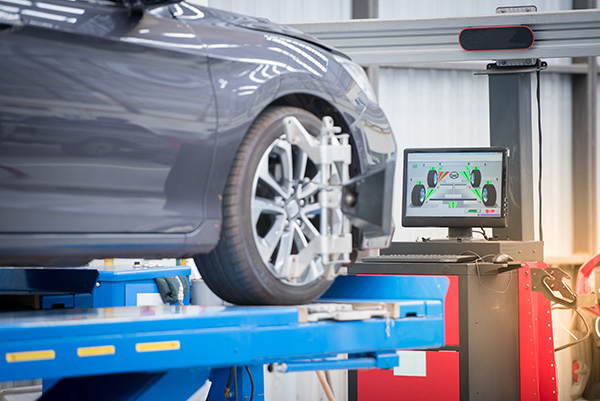
It starts off subtle—your hands are steady on the wheel, but your car has other plans. You feel it drifting slightly to one side, and before you know it, you're constantly adjusting just to keep it straight. If your car is pulling to the left or right, there’s a good chance something’s off under the surface, and it’s not something to ignore.
Even a small pull can be a sign of tire issues, alignment problems, or worn suspension components. Catching the cause early can save you from uneven tire wear, steering trouble, and more expensive repairs later.
Tire Pressure and Uneven Wear
One of the most common (and easiest to fix) reasons your car pulls is uneven tire pressure. When one tire has less air than the others, it creates an imbalance that shifts the way your vehicle moves. If the front right tire is underinflated, for example, the car may naturally drift in that direction.
Check your tire pressure regularly—especially if the pull seems to come and go. Over time, tires with uneven wear can also affect your vehicle’s balance. If one tire has more tread than another, or if a tire is worn unevenly across the surface, it can pull the car even if all the pressures are correct.
Misaligned Wheels
Wheel alignment refers to the angles of your tires relative to the road and each other. If your alignment is off, your car may drift or pull in one direction, even when your steering wheel is centered.
Alignment can be thrown off by potholes, curbs, or just everyday driving. If you notice the car pulling more when you let go of the steering wheel, or if your steering wheel seems off-center even when driving straight, there’s a good chance your alignment needs attention.
Besides affecting control, poor alignment also causes your tires to wear faster, costing you more in the long run.
Brake Issues That Can Cause Pulling
If your car only pulls when you apply the brakes, the issue might be in the braking system. A sticking brake caliper or uneven brake pad wear can cause one wheel to slow down more than the other, pulling the car to one side when you brake.
You may also feel vibration through the steering wheel during braking, which is another sign that your rotors or calipers need inspection. This kind of pull is usually more noticeable at higher speeds or during firm braking.
Worn or Damaged Suspension
Your car’s suspension system is responsible for keeping the wheels in proper alignment with the road. If a control arm bushing, ball joint, or tie rod is worn or damaged, it can throw off your alignment and cause your car to wander.
Suspension problems tend to come with other symptoms like clunking noises, poor handling, or a rough ride. If your car feels less stable or seems harder to keep straight than it used to, don’t rule out suspension as a cause.
Torque Steer in Front-Wheel-Drive Vehicles
If you drive a front-wheel-drive car and notice the pull happens mainly during hard acceleration, it might not be a mechanical issue—it could be torque steer. This happens when more power is delivered to one wheel than the other during acceleration, causing a sudden jerk or pull.
Torque steer is more noticeable in older or high-powered front-wheel-drive cars, and while it’s not always a problem, excessive or worsening torque steer could point to worn drivetrain components or unbalanced power delivery.
If your car’s pulling to one side, don’t wait until it gets worse. Let our experts at Dhillon Motorsports in San Jose, CA, inspect your tires, alignment, brakes, and suspension to find the real issue and get your car tracking straight again. Call today to schedule your inspection!